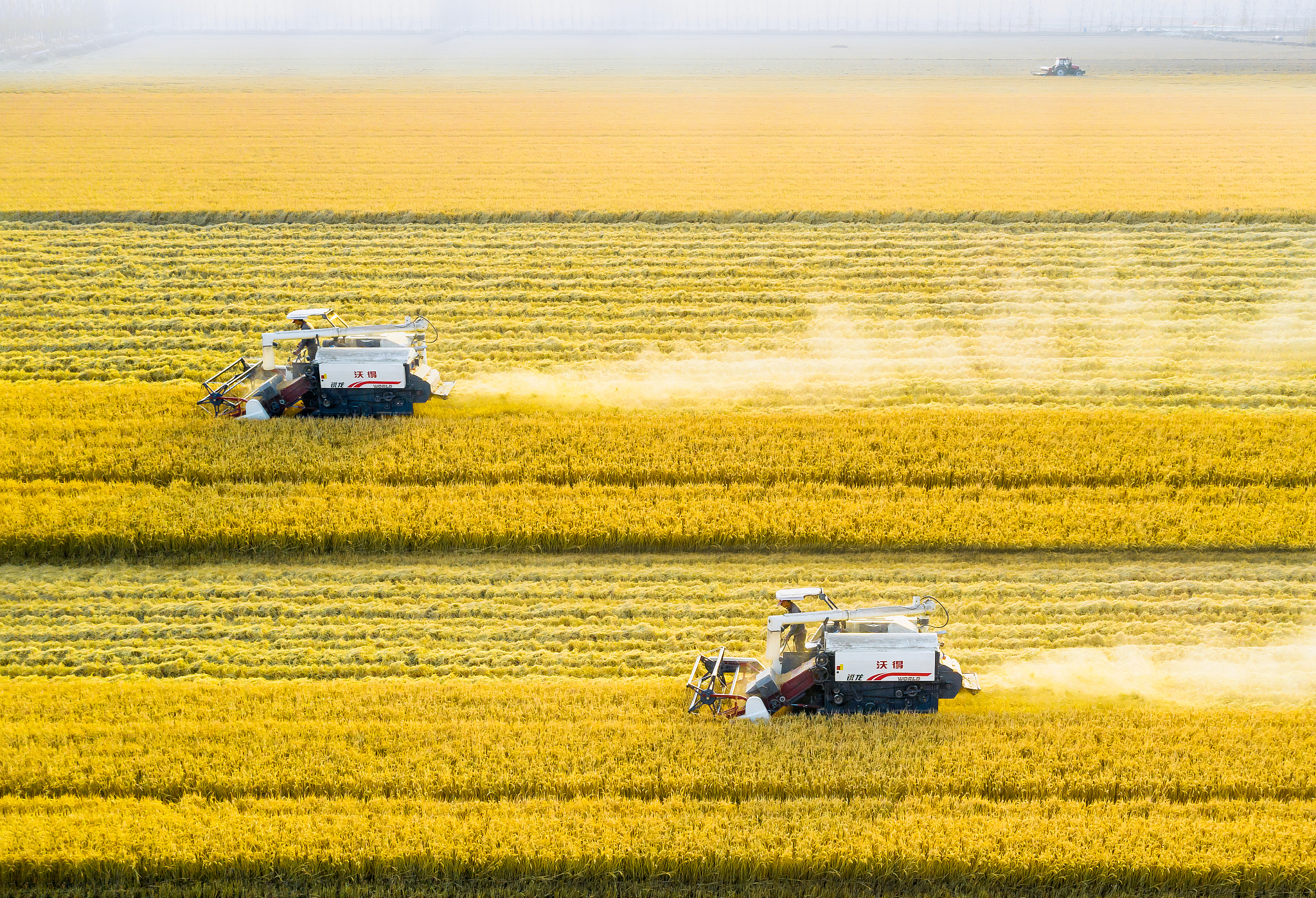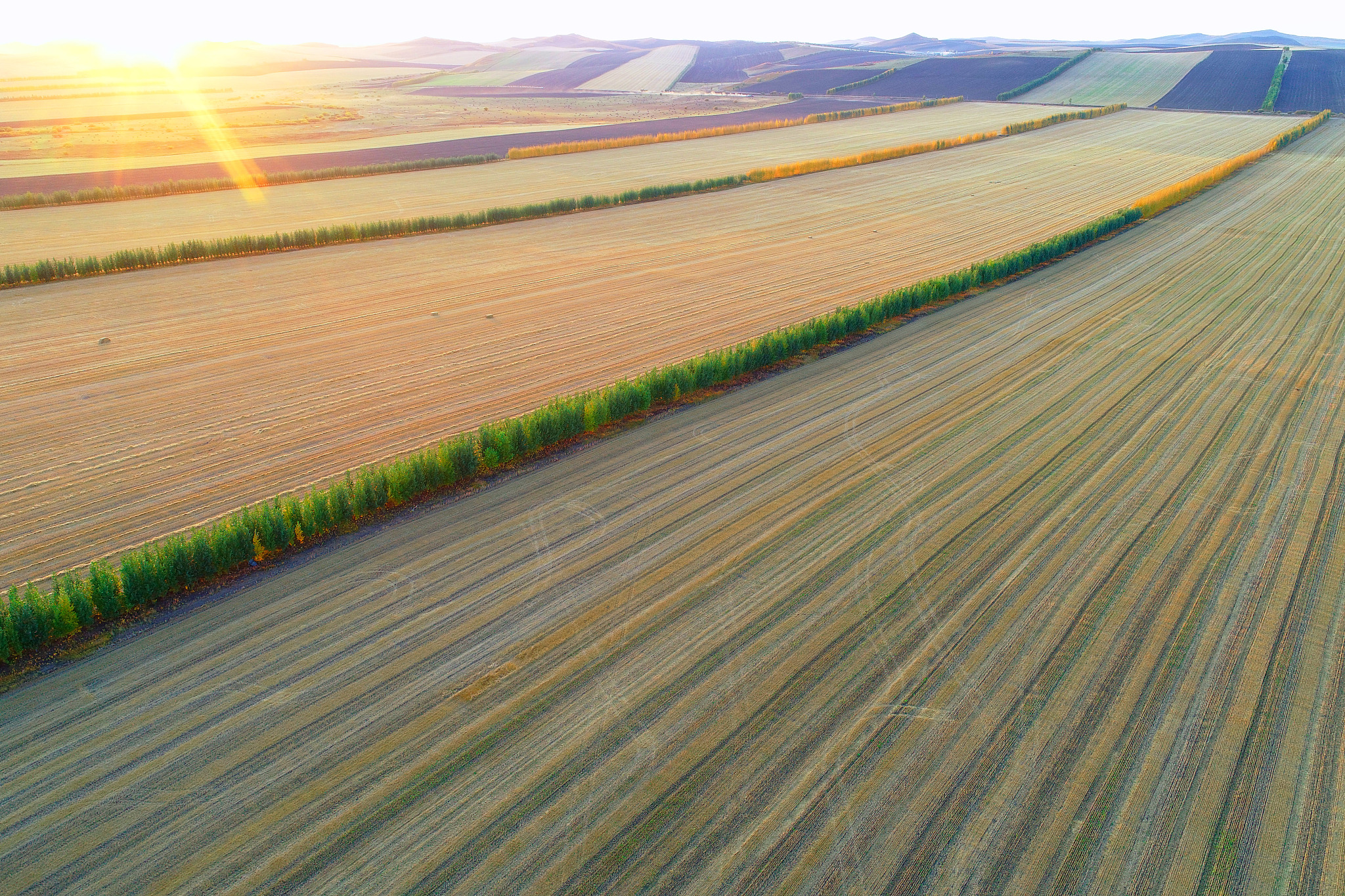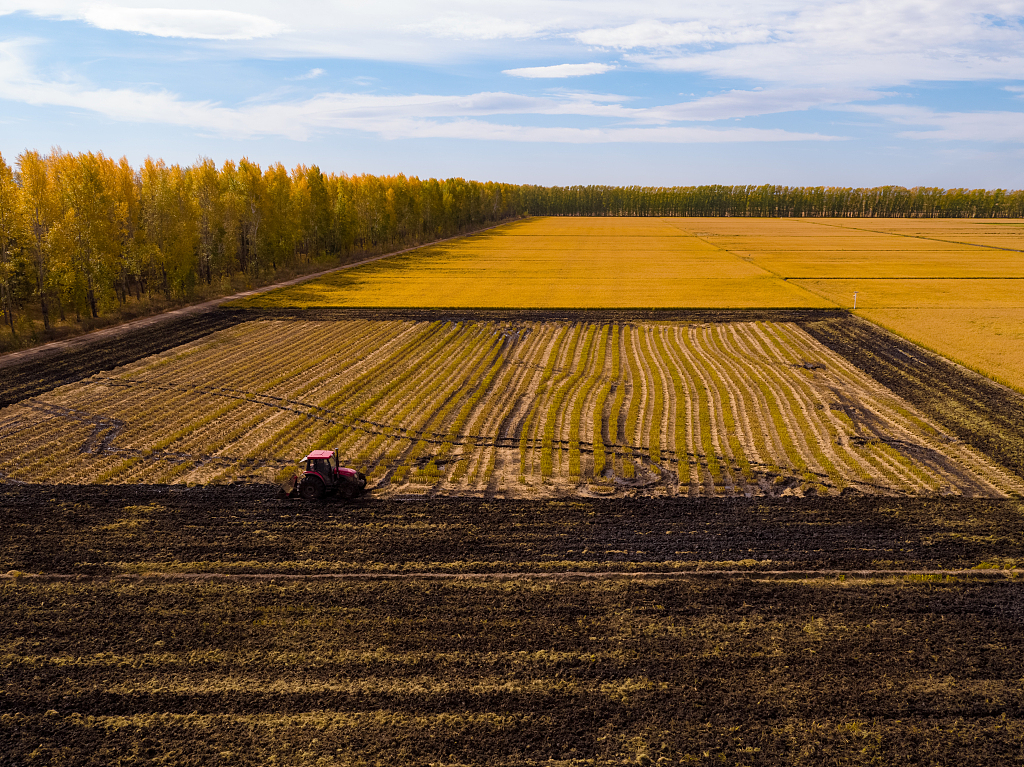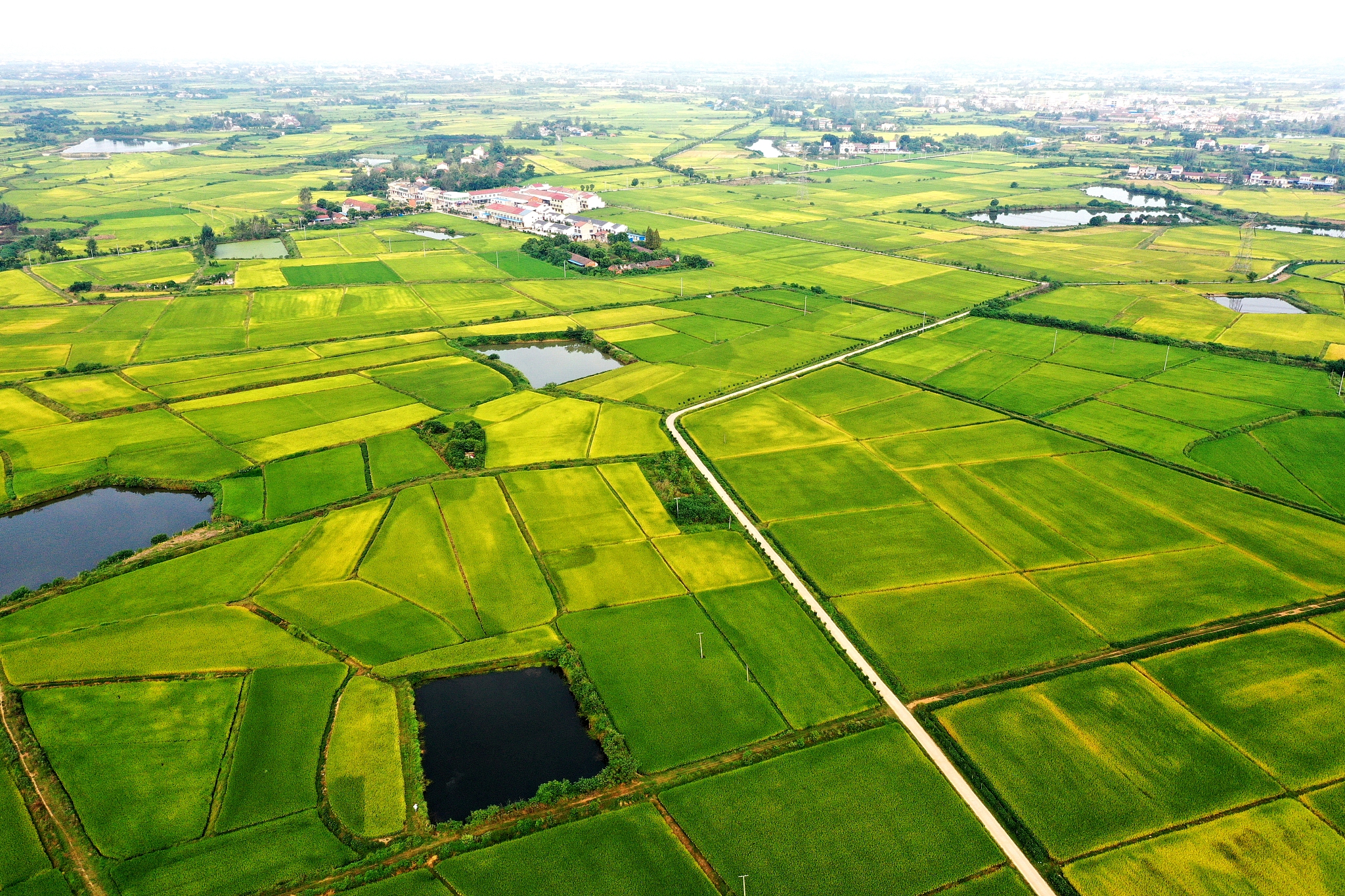Autumn has been a season for harvest for a long time. Chinese Farmers' Harvest Festival falls on Autumn Equinox, which is September 23 this year. The festival was approved by China's State Council in 2018, not only to honor Chinese farmers' work, but also to showcase the country's agriculture-oriented tradition.
China's grain production has remained consistent with over 650 billion kilograms for the past five years, and the summer grain harvest in 2020 set a new high, with a 0.9 percent increase from the previous year, according to National Bureau of Statistics of China in 2020.
With a population of 1.4 billion, nearly one fifth of the world's population, how China feeds its people has been a global concern.

Three harvesters are operated in a wheat field of Huaian, east China's Jiangsu Province. /CFP
Three harvesters are operated in a wheat field of Huaian, east China's Jiangsu Province. /CFP
Food security has become a crucial priority for China, with the "No 1 document" agricultural policy blueprint calling for all provinces to increase grain output during the 2021-2025 period. Plains suitable for growing crops are increasing yields in a variety of ways across the country.
Main "granaries" from north for south
Due to their unique geographical environment and climatic advantages, there are three plains have become the country's important granaries: Northeast China Plain, Huang-huai-hai Plain (North China Plain) and Jianghan Plain.

An aerial photo taken from the Northeast China Plain at Qiqihar, northeast China's Heilongjiang Province. /CFP
An aerial photo taken from the Northeast China Plain at Qiqihar, northeast China's Heilongjiang Province. /CFP
The Northeast China Plain is one of the major grain-producing areas of China due to its fertile black soil and extensive amounts of arable land suitable for mechanized farming. Located in northeast China, it's the largest plain across the country, and spans the provinces of Heilongjiang, Jilin and Liaoning, as well as Inner Mongolia Autonomous Region.

An aerial photo taken from the Northeast China Plain at Qiqihar, northeast China's Heilongjiang Province. /CFP
An aerial photo taken from the Northeast China Plain at Qiqihar, northeast China's Heilongjiang Province. /CFP
Black soil is recognized as the most fertile soil worldwide. It takes about 200 or 400 years to form a one-centimeter thick black soil layer under natural conditions. There are only three known black soil regions in the world, which are located in the Dnipr river basin of Ukraine, the Mississippi River basin of the U.S. and the Northeast plain of China.

Northeast China's Heilongjiang Province ushers in its harvest season. /CFP
Northeast China's Heilongjiang Province ushers in its harvest season. /CFP
In 2020, the total grain output of the three northeastern provinces reached 136.85 billion kilogram, accounting for 20.4 percent of the national total. Heilongjiang, Jilin and Liaoning account for more than one fifth of China's grain output in recently years, according to data of the National Development and Reform Commission.

The North China Plain enters the peak time of wheat harvest on June 14, 2020. /CFP
The North China Plain enters the peak time of wheat harvest on June 14, 2020. /CFP
Huang-Huai-Hai Plain (HHHP), also known as North China Plain, dubbed as "land of the yellow earth," is one of China's most important agricultural regions and also the country's most populous region.
It's mainly composed of the Yellow, Huaihe, Haihe and Luan Rivers, covering the cities of Beijing and Tianjin, as well as Hebei, Shandong, Henan, Anhui and Jiangsu Provinces.

Ripe rice in the Jianghan Plain is rich in color. /CFP
Ripe rice in the Jianghan Plain is rich in color. /CFP
Further south, Jianghan Plain is an alluvial plain located in the middle and south of Hubei Province.
The plain is low and flat. Except for the marginal areas, the elevation is below 35m. The precipitation of the region falls between April and July. There are many rivers and lakes in the plain, giving it abundant water resources to grow crops.
(Cover image designed by Liu Shaozhen)

